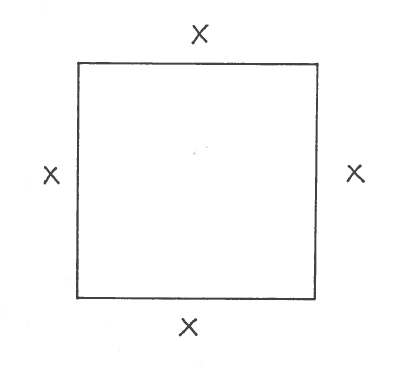SOLUTION 1: Draw a square with edges labeled $x$, and assume each edge is a function of time $t$.

$ \ \ \ \ $ a.) The perimeter of the square is
$$ P=x+x+x+x \ \ \ \ \longrightarrow $$
$$ P=4x $$
GIVEN: $ \ \ \ \displaystyle{ dx \over dt } = 3 \ cm/sec. $
FIND: $ \ \ \ \displaystyle{ dP \over dt } $ when $ x=10 \ cm. $
Now differentiate the perimeter equation with repect to time $t $, getting
$$ D \{ P \} = D \{4x\} \ \ \ \longrightarrow $$
$$ \displaystyle{ dP \over dt } = 4 \displaystyle{ dx \over dt } \ \ \ \longrightarrow $$
$\Big($ Now let $\displaystyle{ dx \over dt } = 3. \Big)$
$$ \displaystyle{ dP \over dt } = 4 (3) = 12 \ cm/sec. $$
$ \ \ \ \ $ b.) The area of the square is
$$ A=(base)(height)= x \cdot x \ \ \ \ \longrightarrow $$
$$ A=x^2 $$
GIVEN: $ \ \ \ \displaystyle{ dx \over dt } = 3 \ cm/sec. $
FIND: $ \ \ \ \displaystyle{ dA \over dt } $ when $ x=10 \ cm. $
Now differentiate the area equation with respect to time $t $, getting
$$ D \{ A \} = D \{x^2 \} \ \ \ \longrightarrow $$
$$ \displaystyle{ dA \over dt } = 2x \displaystyle{ dx \over dt } \ \ \ \longrightarrow $$
$\Big($ Now let $\displaystyle{ dx \over dt } = 3$ and $x=10. \Big) $
$$ \displaystyle{ dA \over dt } = 2 (10) (3) = 60 \ cm^2/sec. $$
Click HERE to return to the list of problems.

